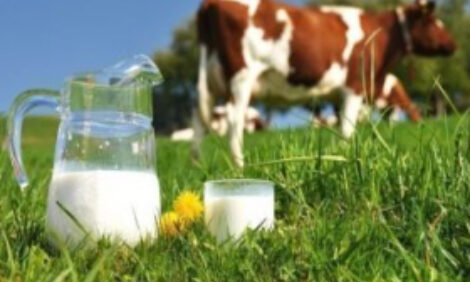



USDA - Romanian Dairy Sector Overview
A shrinking dairy sector is forecast to continue contracting through 2013 as an ageing rural population, some of the lowest milk prices in Europe and a summer drought combine to impede sector progression.The Romanian cattle population has been on a decline for the past several years. According to the figures released by the Statistical Office, the cattle inventory dropped by a third during the past 5 years since Romania joined the EU, from 2.9 million heads in December 2006 to 1.9 million heads in December 2011.
The steep drop in total cattle population is attributed in a larger extent to the backyard segment, which is predominant in Romania, 87 per cent of the farms being holdings with only 1-2 heads/holding (per 2010 data). Expensive feed and low milk prices along with an aging rural population are among the factors contributing to this decline.
In 2012 and 2013 Romania’s dairy inventory is expected to continue to contract, cows in milk figure being forecast to drop further from the level of 1,154,000 dairy cows reported in December 2011. High feeding costs due to the severe summer drought is the major factor determining the reduction in the national herd.
Unlike other years when the intra-mountain regions were less affected, this year rainfall was much lower in these areas as well. As a result both pasture and hayfields faced dryer conditions forcing farmers to purchase more expensive feed for livestock. While the latest data does not reflect a dramatic increase in slaughter numbers in 2012, the increase will become more visible as data comes in during 2013.
Milk production followed the same trend as cattle numbers, declining by 20 per cent over the period, from 5.45 billion liters in 2007 to 4.37 billion liters in 2011. Milk distribution is worth mentioning as less than a quarter of the milk produced in Romania enters the processing channel for commercial purposes (20 per cent).
The largest volume disappears as on-farm family consumption (40 per cent), followed by direct sales with more than a quarter of production (30 per cent), with the balance going as feed use. Direct sales consist of on-farm sales of raw, non-pasteurized milk or dairy products to consumers. This practice is prevalent in rural areas.
Farmers have been complaining about the low milk prices and theirs loss-making business. Among all EU Member States, Romanian farmers are at the bottom of the hierarchal chain in terms of milk price. Farm gate milk price varied in the summer of 2012 from USD 0.26/liter for EU non-compliant milk to USD 0.4/liter for compliant milk.
Despite rising feeding costs, this price level has stagnated for several years leading to a lack of satisfaction among farmers. Stagnation is the result of several price constraining factors. Processers on the one hand have high collection costs (estimated at about 30 per cent of the purchasing price) and on the other hand part of the delivered milk is non-EU compliant.
Among the factors recognized as inhibiting farmer ability to make operations more profitable is the lack of organization of cooperatives or associations. Tired of fighting with milk-processors on the milk price, some dairy farmers took the initiative to establish different forms of associations or cooperatives committed to finding solutions from ensuring reasonable prices for feed ingredients and acceptable price for milk deliveries to finding better markets for their products. Although not having a significant impact on the sector yet, such cooperatives are registering improved bargaining power thus attracting attention of other producer groups.
Concerning the level of milk production, Romanian farmers have not been able to fulfill their dairy quota since joining the EU. Therefore the upcoming EU policy change to remove the dairy quota is not favorably viewed by domestic producers.
They fear Romania will become the dumping market for MS which are approaching or even exceeding their quota currently. Aware of the great production potential offered by Romania, Western companies are starting to come forward investigating the sector, investing in farm acquisitions and Greenfield investments, and starting to introduce their own managerial and marketing experience into this field.
On the other hand, there is an emerging tendency among local dairy farms to switch to beef cattle, as they are perceived as less demanding in terms of care, hygiene, feeding, etc. Although there is no available official statistics on the cow inventory by breed, farmer signals indicate the number of beef cattle is on the rise.
Given unattractive prices offered on carcasses by slaughterhouses and long distance from farms to slaughter facilities Romania is becoming an important live cattle exporter among EU member states with major destinations being Croatia, Libya, Jordan, Syria, and Iraq. The recent domestic support allocated to farms located in the less-favored areas for beef breeds may lead to increased opportunities for US genetic suppliers for beef species as well.
January 2013


